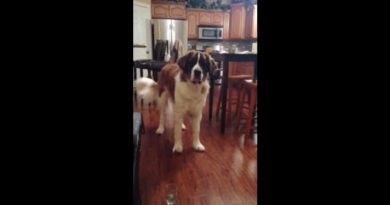How to Manage Myasthenia Gravis-Related Fatigue
By Kelly Aiken, as told to Kara Mayer Robinson
In 2012, after a few years of breathing issues, fatigue, and frequent illness, I found out I have myasthenia gravis. Now, 10 years later, fatigue is still a problem. But I’ve found ways to manage it.
Daily Ups and Downs
My fatigue gets worse as the day goes on. I tend to do best in the morning. By late afternoon, I’m wearing down.
I’m usually in bed around 6 pm. I need around 14 hours of horizontal rest, or lying in bed. If I don’t get it, it’ll catch up with me and I’ll be tired much longer.
I struggle with sleep, though. I have a hard time falling sleep and staying asleep. When it’s particularly difficult, my fatigue gets worse.
I’ve also noticed other things that trigger my fatigue, like heat, stress, illness, and bug bites. Certain foods also make it worse, like sweets and greasy foods. I do better when I eat fairly healthy.
Sometimes the fatigue comes out of nowhere. I can be feeling pretty good and then all of a sudden, I’m done.
Treatment Ups and Downs
My fatigue roller coasters a lot based on my treatment.
Every month, I receive a 5-day series of intravenous immunoglobulin (IVIg). When I’m due for treatment, I do a fabulous impression of a rag doll. I’m floppy and my body just doesn’t work as it should. Even my brain function slows down.
Before trying IVIG, I did plasmapheresis, a therapeutic plasma exchange, every week. My brain slowed down a lot and I just couldn’t think well. After 5 years, I decided to try IVIg. It made a big difference. My whole body worked better and my personality came back. Now my weakness and fatigue are better than they were before.
Strategies I Use to Manage Fatigue
I’ve figured out a few strategies and adaptations to manage fatigue and function better.
I have a gadget that breaks the seal on jars so I can open new ones easily. Automatic can openers are helpful. I even figured out that if I attach a belt to my laundry basket, I can drag it around, which makes laundry easier and works nicely when I’m doing yardwork and need to clean up weeds or sticks.
I’ve learned that if I struggle with a task, there’s often a simpler, less strenuous way to get it done. It just requires a little creativity.
For other tasks that are simply beyond my abilities, I have a few people who are always just a phone call away. While I absolutely hate asking for help, I couldn’t be more grateful for these people in my life. I’ve also learned a lot from my local MG support group.
On the days leading up to my treatment, I plan ahead. I try to make sure I have everything I may need, so I don’t have to ask for help later. I try to do everything that needs to be done, so I can rest during my series and feel as good as possible after it.
I’ve found that sometimes Tylenol can help manage the severity of fatigue. It seems to delay the onset of pain, which sometimes delays the fatigue. If I have a long day or two planned, I’ll wake up and take Tylenol first thing to help slow the fatigue and then I’ll take it throughout the day to help me last.
Some people do meditation or yoga. For exercise, I walk when my body is up for it. My happy place is the water. I love swimming laps. On my good days in the water, you’d never know I had a muscle disease. The water supports my body and my spine can stretch out. It’s one of the most amazing feelings.
Finding a Balance
I’ve found that resting when my body says to rest is the key to staying somewhat functional. If I ignore that feeling, my symptoms get worse.
Years ago, I often pushed myself until my body would stop me. Fatigue is a showstopper. There’s only so much pushing back you can do without your body giving out.
When I listen to my body, I do OK. I’m much better at listening than I used to be, but I still have to re-learn my limits once or twice a year.
Learning to Live With It
The hardest thing about the weakness and fatigue is what I’ve had to give up.
Before my myasthenia gravis journey, I worked as a teacher in a day care for children and adults with developmental disabilities. I loved working. I loved finding the right motivation to encourage children to modify their behavior and being a source of support for adults with disabilities.
I had to stop working when very quickly a whammy of symptoms hit. I’ve come around to acceptance now. I’m well aware of how hard things can get, and I’m grateful I don’t get quite that bad anymore. I’ve learned to take my bad days with a grain of salt and just ride the roller coaster until things get better again, because things will get better.
I’ve learned nothing is permanent. Everything is temporary. Feeling good is temporary, as well as feeling bad. You just have to hold tightly to that grab bar and hang on.
Feeling good is temporary, as well as feeling bad. You just have to hold tightly to that grab bar and hang on.




